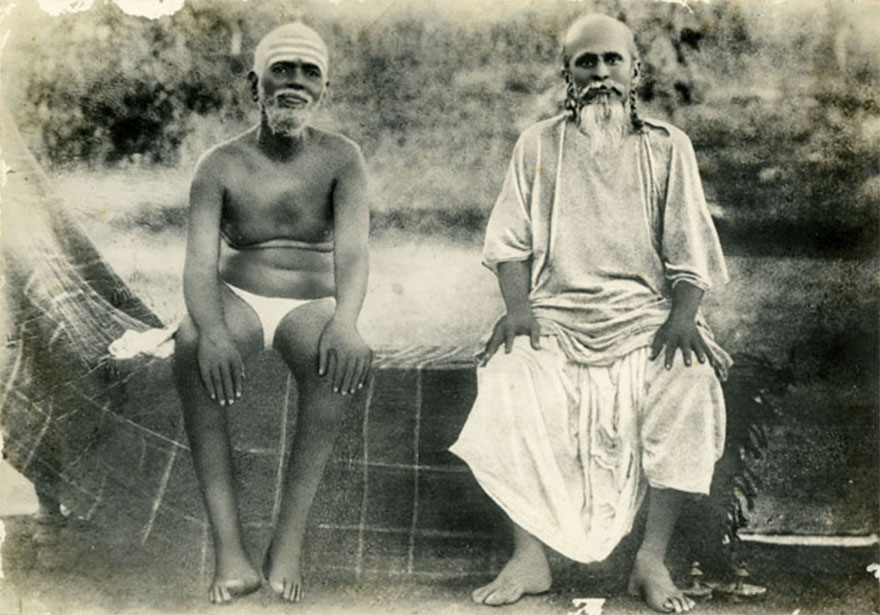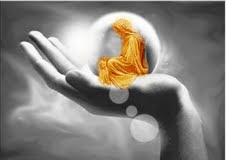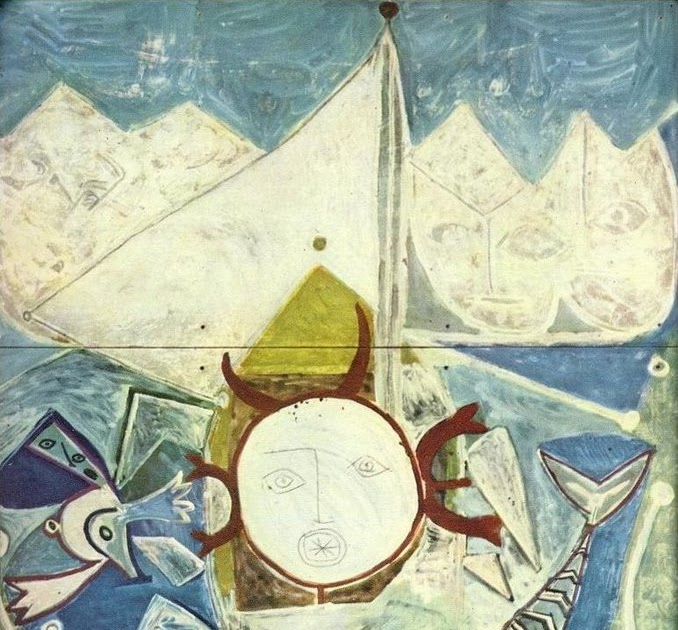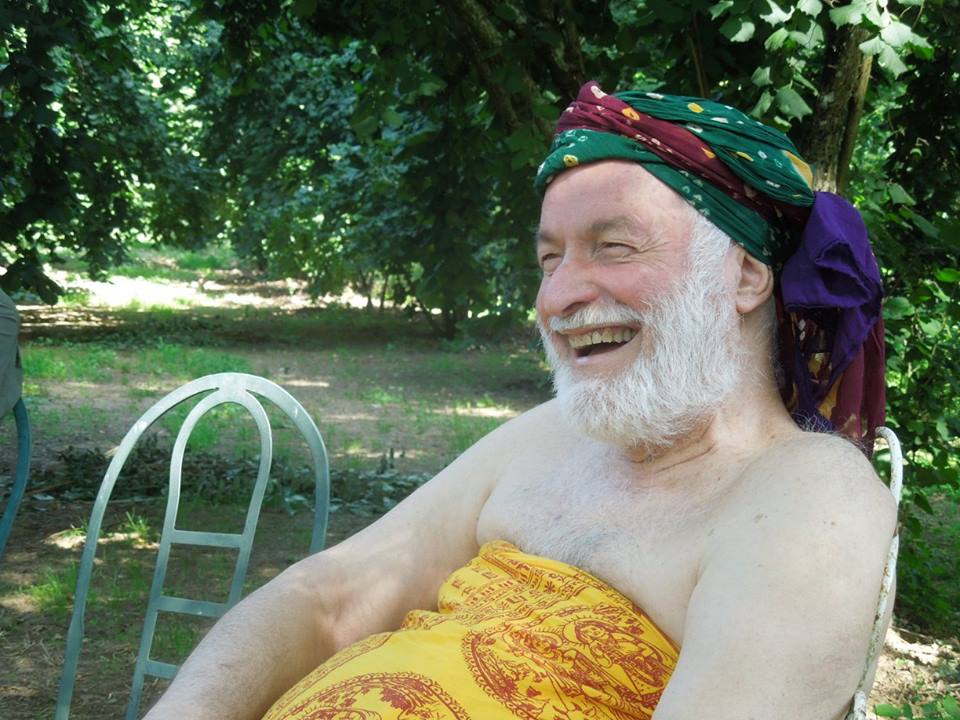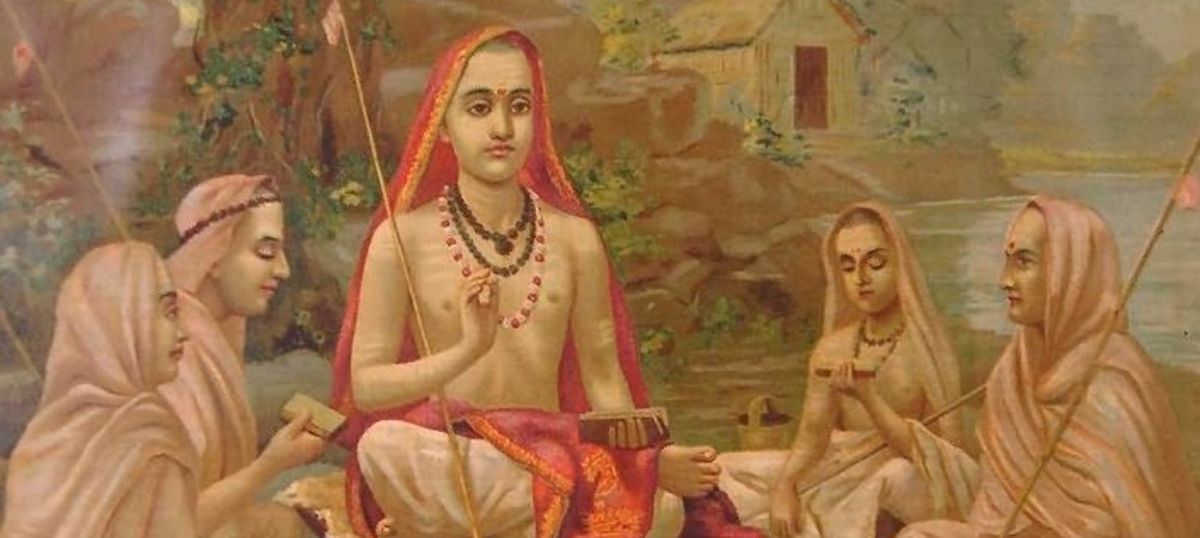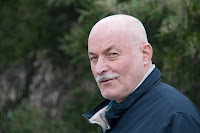
Ethics belongs to reasoning and thus to the logical mind that provides pre-established responses based on past experiences (conscious and subconscious) while happiness is connaturated in the unconscious and resides in the analog mind.
Man, like all other animals, is happy to live for his own natural disposition.
Let's see what say recent scientific studies, defined ‘Brain imaging', which allow to see which parts of the brain function specially during certain thoughts, words, and actions. From these 'brain maps' it turns out that rational thinking and language activate in most cases the left hemisphere, which is similar to a computer, as it accumulates memory data and repeats them on request. The right part of the brain is activated by music, from the non-verbal language, which is made of intonations of voice, looks, gestures, facial mimicry, etc. and creativity, which is the original combination of elements present in nature ...
Unfortunately, in modern society, especially as a result of the dominance of rationalist science (and maschilist culture), the supreme judgment of the mind has taken over, from which the great affirmation of monotheistic religions and the arrogance of use to other creatures and of nature (in this sense is illuminated the reading of "The Limit of the Utility" of Battaille).
I make a concrete example. At first superficial analysis it may seem strange that even so-called animal fondness (animalism) and subsequent acceptance of veganism are the result of reasoning (and not a spontaneous response to solidarity with other species). To be honest, despite animalism and veganism stand in opposition (apparent) with male chauvinist and patriarchal overtones, in reality they are a counterpart of these . Because their opposition is based on the considetation of an hypothetical intellectual and ideological superiority.
In Hua Hu Ching it is said: "Other common beings often require tolerance. For integral beings there is no such thing as tolerance, because there is no such thing as the others. They have renounced all ideas of individuality and expanded the their good will without prejudice in any direction, not hating, not resisting, not contesting, loving, hating, having expectations: all of these are attachments, attachment prevents the growth of their true being, therefore integral being is not attached to anything and can relate to everyone with an unstructured attitude. "
In Taoism, which is not really a religion and not even a philosophy, but a form of naturalism lived without emphasis (we may call it a kind of deep ecology ante litteram), it is indicated to abstain from excesses, whether positive or negative, as a natural behavior of life. You understand good and evil but do not like either one or the other. Good (yang) and evil (Yin) are the two aspects of the manifestation of existence on this earth. It is for this reason that the Taoists ridiculed the good Confucius which, as a convinced rationalist, advocated social and political ethics, while they were confined to remaining in their original nature. Respecting natural propensities, not those acquired for utilitarian convenience or moralistic deviation ....
Happiness is our true nature and pursuit of happiness is just one way to obscure and hide it. In fact, in an ancient popular proverb we say "The best is the enemy of good" ... because by pursuing the hypothetical better, you do not live the good that is at your fingertips. It also proves at the legislative level the continued introduction of laws in society that make justice more and more crappy and impractical.
Perhaps the fantastic and the poetic should be rediscovered even in our social and productive lives. That poeticity, which in the ancient times characterizes the questioning of man about the real and the meaning of his own experiences, is a significant spark of an ORIGINAL CONCORD between the spontaneous acceptance of the other (not as a consequence of an ethics injunction) and the innate happiness.
It is necessary to overcome the gap that has almost become a gangrenous conflict between poetry and rhetoric, re-thinking the knowledge that joy is only the result of an "ethical" attitude, indeed it is through the "moralistic" rationality that it is forgotten and obliterated.
Paolo D'Arpini

Testo italiano
L'etica appartiene al ragionamento e quindi alla mente logica che fornisce risposte precostituite basate su trascorse esperienze (conscio e subconscio) mentre la felicità è connaturata nell'inconscio e risiede nella mente analogica.
L'Uomo, come tutti gli altri animali è felice di vivere per sua propria disposizione naturale.
Vediamo cosa dicono i recenti studi scientifici basati su tecnologie, dette ‘Brain imaging’, che permettono di vedere quali parti del cervello si mettono in funzione maggiormente durante certi pensieri, parole e azioni. Da queste ‘mappe del cervello’ risulta che il pensiero razionale e il linguaggio attivano nella maggior parte dei casi l’emisfero sinistro, che e’ simile a un computer, in quanto accumula i dati delle esperienze in memoria e li ripete su richiesta. La parte destra del cervello e’ attivata dalla musica, dal linguaggio non-verbale, che e’ fatto di intonazioni della voce, sguardi, gesti, mimica facciale, ecc. e dalla creatività, che è la combinazione originale di elementi presenti in natura…
Purtroppo nella società moderna, soprattutto in seguito al predominio della scienza razionalista (e della cultura maschilista) ha preso il sopravvento la parte giudicativa della mente, da cui la grande affermazione delle religioni monoteiste, e della arroganza dell'uso nei confronti delle altre creature e della natura (in tal senso è illuminate la lettura de "Il Limite dell'Utile" di Battaille).
Faccio un esempio concreto. Ad una prima analisi superficiale potrà apparire strano che anche il così detto amore per gli animali (animalismo) e conseguente accettazione del veganesimo siano il risultato di un ragionamento (e non una spontanea risposta di solidarietà verso le altre specie). A dire il vero, malgrado l'animalismo ed il veganesimo si pongano in opposizione (apparente) con la sopraffazione maschilista e patriarcale, in realtà ne sono un contraltare. Si censura considerandolo un proprio diritto, in considerazione di una presunta superiorità ideologica ed intellettuale.
Nel Hua Hu Ching è detto: "Agli altri esseri comuni spesso si richiede tolleranza. Per gli esseri integrali non esiste una cosa come la tolleranza, perché non esiste nessuna cosa come le altre. Essi hanno rinunciato a tutte le idee di individualità e ampliato la loro buona volontà senza pregiudizi in qualunque direzione. Non odiando, non resistendo, non contestando. Amare, odiare, avere aspettative: tutti questi sono attaccamenti. L'attaccamento impedisce la crescita del proprio vero essere. Pertanto l'essere integrale non è attaccato a nulla e può relazionarsi a tutti con una attitudine non strutturata."
Nel taoismo, che non è propriamente una religione e nemmeno una filosofia, ma una forma di naturalismo vissuto senza enfasi, si indica l'astenersi dagli eccessi, sia in positivo che in negativo, come un naturale comportamento della vita. Si comprende il bene ed il male ma non si predilige né l'uno né l'altro. Il bene (yang) ed il male (Yin) sono i due aspetti del manifestarsi della esistenza su questa terra. Ed è per questa ragione che i taoisti irridevano il buon Confucio che da razionalista convinto spingeva per un'etica sociale e politica, mentre essi si limitavano a permanere nella propria natura originale. Rispettando le propensioni naturali, non quelle acquisite per convenienza utilitaristica o deviazione moralistica....
La felicità è la nostra vera natura e la ricerca della felicità è solo un modo per oscurarla e nasconderla. Infatti in un antico proverbio popolare si dice "Il meglio è nemico del bene"... poiché perseguendo l'ipotetico meglio non si vive il bene che è a portata di mano. Prova ne sia anche a livello legislativo la continua immissione di leggi nella società che non fanno altro che rendere la giustizia sempre più cavillosa ed impraticabile.
Forse andrebbe recuperato il fantastico ed il poetico anche nella nostra vita sociale e produttiva. Quella poeticità, che nel mondo antico caratterizza la forma dell’interrogarsi dell’uomo sul reale e sul senso delle proprie esperienze, è spia significativa di una ORIGINARIA CONCORDIA tra una spontanea accettazione dell'altro (non in conseguenza di una ingiunzione etica) e la felicità innata.
Occorre superare il distacco che ha portato quasi ad incancrenire il conflitto tra poesia e retorica, ri-pensando la credenza che la gioia sia il risultato di un atteggiamento "etico", anzi è proprio attraverso la razionalità "moralistica" che essa viene dimenticata e cancellata.
Paolo D'Arpini



